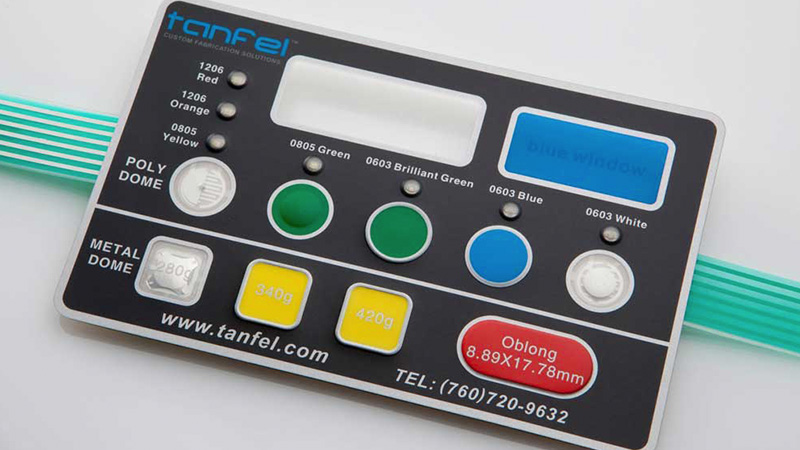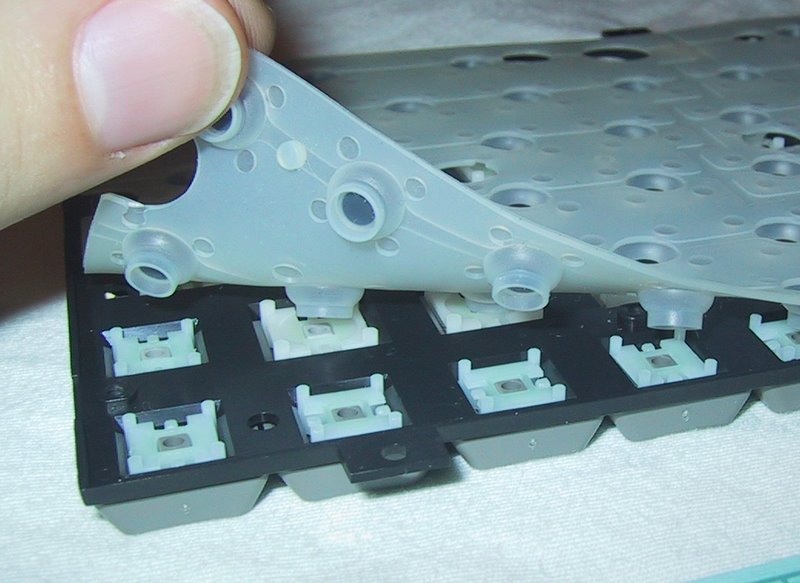Membrane Switches vs. Mechanical Switches: What You Need to Consider
Membrane Switches vs. Mechanical Switches: What You Need to Consider
Blog Article
Membrane Layer Switch Modern Technology: The Trick to Dependable and Cost-efficient Interfaces
Membrane layer switch modern technology has arised as a critical part in the style of customer interfaces, providing both reliability and cost-effectiveness across a varied array of applications. As we check out the multifaceted benefits of membrane buttons, their potential for advancement elevates inquiries regarding future applications and developing fads.
Recognizing Membrane Layer Switch Innovation
Membrane switch modern technology is a commonly utilized user interface service in various electronic devices, supplying a smooth blend of capability and style. This modern technology incorporates several layers of materials, usually containing a visuals overlay, spacer layer, and a circuit layer. The visuals overlay presents the interface components, while the spacer layer separates the circuit layer from the overlay till an individual turns on a switch.
When stress is related to the overlay, the circuit layer finishes the electrical circuit, sending out a signal to the tool. This device enables various arrangements, including responsive responses and backlighting alternatives, boosting individual communication. Membrane layer buttons are commonly produced utilizing resilient materials such as polyester or polycarbonate, making sure durability and resistance to ecological elements like moisture and dust.
The adaptability of membrane switches enables their application in diverse sectors, consisting of medical gadgets, consumer electronic devices, and commercial controls. Their portable style allows for integration into space-constrained atmospheres, offering a reliable interface without endangering visual charm. Comprehending the complexities of membrane layer button modern technology is essential for manufacturers and developers looking for to produce reliable and effective human-machine interfaces.
Trick Benefits of Membrane Switches
While various user interface services exist, membrane layer switches deal unique advantages that make them a preferred choice in many applications. Among the main advantages is their toughness; membrane switches are developed to withstand extreme ecological problems, including dampness, dust, and temperature fluctuations, ensuring resilient efficiency. This resilience considerably minimizes the need for frequent substitutes, therefore reducing overall upkeep expenses.

Additionally, membrane layer switches are lightweight and compact, making them ideal for applications where space is limited. Their low-profile design adds to a smooth look without jeopardizing functionality.
Cost-effectiveness is additionally a significant advantage, as the production process for membrane switches has a tendency to be more economical compared to traditional mechanical switches. This price, combined with their integrity and ease of setup, placements membrane layer switches over as a useful service for a large range of industries looking Learn More Here for effective and effective interface.
Applications Throughout Different Industries
Just how do membrane layer switches adjust to the varied requirements of different sectors? Membrane switch technology is significantly acknowledged for its adaptability, making it appropriate for a wide array of applications throughout several markets.
In consumer electronics, membrane layer switches provide a compact service for remote controls and home appliances, boosting user experience with user-friendly design. Additionally, the commercial field leverages membrane switches for equipment control board, taking advantage of their resistance to harsh YOURURL.com environments, such as moisture and dust.
Military and aerospace applications also make use of membrane buttons for their integrity and capacity to endure extreme conditions, guaranteeing operational effectiveness in crucial circumstances. The food and beverage industry takes on these buttons for automated systems, where hygiene and convenience of operation are paramount (membrane switch). Ultimately, membrane layer switches are tailored to satisfy the distinct demands of each market, proving their necessary duty in modern innovation interfaces
Layout and Personalization Options

In the realm of membrane layer switch technology, design and modification options play a critical role in improving capability and customer interaction. These switches can be tailored to fulfill particular operational demands and visual choices, making them functional elements in various applications.
Among the key customization choices is the design of the switch itself, which can be developed to suit unique interface and ergonomic considerations. By adjusting the shape, dimension, and plan of switches, suppliers can create instinctive styles that promote ease of use. Additionally, the consolidation of different shades and visuals overlays enables for branding and improved presence, guaranteeing that individuals can quickly recognize features.
In addition, membrane layer switches can be engineered with numerous responsive feedback mechanisms, such as raised buttons or distinct clicks, to improve the user experience. Various products can also be selected for resilience and environmental resistance, attending to elements such as moisture, temperature variations, and chemical direct exposure.
Ultimately, the comprehensive style and personalization alternatives available in membrane button technology empower services to produce tailored options that not just satisfy functional requirements yet additionally line up with their branding and operational needs.

Future Patterns in Membrane Layer Buttons
As membrane layer switch technology remains to progress, future patterns are significantly concentrated on improving customer experience and integrating innovative performances. One substantial trend is the assimilation of touch-sensitive and capacitive technologies into standard membrane layer switches. This advancement allows for more instinctive individual interfaces, providing responsive comments while maintaining a smooth design.
An additional arising trend is using eco-friendly materials, driven by the expanding need for lasting manufacturing methods. Makers are looking for to decrease their carbon footprint by using recyclable substratums and low-impact inks, aligning with global sustainability objectives.
Moreover, the rise of the Net of Points (IoT) is motivating the incorporation of clever functions right into membrane layer switches. Enhanced connection alternatives will certainly make it possible for tools to interact with each various other, permitting seamless integration right into more comprehensive systems.
Additionally, improvements in printing modern technologies, such as digital printing, are enabling higher style flexibility and modification. This makes it possible for makers to produce complex designs and vibrant colors cost-effectively.

Verdict
Finally, membrane layer button technology represents a crucial innovation in news individual interface style, providing considerable benefits in durability, customization, and cost-effectiveness. Its extensive applicability throughout varied markets highlights its importance in modern-day innovation. As improvements remain to emerge, specifically in touch-sensitive interfaces and sustainable products, the possibility for membrane changes to boost user experience and functionality stays encouraging. Continued expedition of this modern technology will likely yield better renovations and widen its scope in future applications.
Report this page